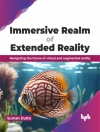This handbook provides an overarching view of cyber security and digital forensic challenges related to big data and Io T environment, prior to reviewing existing data mining solutions and their potential application in big data context, and existing authentication and access control for Io T devices. An Io T access control scheme and an Io T forensic framework is also presented in this book, and it explains how the Io T forensic framework can be used to guide investigation of a popular cloud storage service.
A distributed file system forensic approach is also presented, which is used to guide the investigation of Ceph. Minecraft, a Massively Multiplayer Online Game, and the Hadoop distributed file system environment are also forensically studied and their findings reported in this book. A forensic Io T source camera identification algorithm is introduced, which uses the camera’s sensor pattern noise from the captured image.
In addition to the Io T access control and forensic frameworks, this handbook covers a cyber defense triage process for nine advanced persistent threat (APT) groups targeting Io T infrastructure, namely: APT1, Molerats, Silent Chollima, Shell Crew, Net Traveler, Project Sauron, Copy Kittens, Volatile Cedar and Transparent Tribe.
The characteristics of remote-controlled real-world Trojans using the Cyber Kill Chain are also examined. It introduces a method to leverage different crashes discovered from two fuzzing approaches, which can be used to enhance the effectiveness of fuzzers. Cloud computing is also often associated with Io T and big data (e.g., cloud-enabled Io T systems), and hence a survey of the cloud security literature and a survey of botnet detection approaches are presented in the book. Finally, game security solutions are studied and explained how one may circumvent such solutions.
This handbook targets the security, privacy and forensics research community, and big data research community, including policy makers and government agencies, public and private organizations policy makers. Undergraduate and postgraduate students enrolled in cyber security and forensic programs will also find this handbook useful as a reference.
Tabella dei contenuti
1 Big Data and Internet of Things Security and Forensics: Challenges and Opportunities.- 2 Privacy of Big Data – a Review.- 3 A Bibliometric Analysis of Authentication and Access Control in Io T Devices.- 4 Towards Indeterminacy – Tolerant Access Control in Io T.- 5 Private Cloud Storage Forensics: Seafile as a Case Study.- 6 Distributed Filesystem Forensics: Ceph as a Case Study.- 7 Forensic Investigation of Cross Platform Massively Multiplayer Online Games: Minecraft as a Case Study.- 8 Big Data Forensics: Hadoop Distributed File Systems as a Case Study.- 9 Internet of Things Camera Identi cation Algorithm Based on Sensor Pattern Noise Using Color Filter Array and Wavelet Transform.- 10 Protecting Io T and ICS Platforms Against Advanced Persistent Threat Actors: Analysis of APT1, Silent Chollima and Molerats.- 11 Analysis of APT Actors Targeting Io T and Big Data Systems: Shell_Crew, Net Traveler, Project Sauron, Copy Kittens, Volatile Cedar and Transparent Tribe as a Case Study.- 12 A Cyber Kill Chain Based Analysis of Remote Access Trojans.- 13 Evaluation and Application of Two Fuzzing Approaches for Security Testing of Io T Applications.- 14 Bibliometric Analysis on the Rise of Cloud Security.- 15 A Bibliometric Analysis of Botnet Detection Techniques.- 16 Security in Online Games: Current Implementations and Challenges.
Circa l’autore
Dr. Ali Dehghantanha is the Director of Cyber Science Lab in the School of Computer Science, University of Guelph (Uof G), Ontario, Canada. He has served for more than a decade in a variety of industrial and academic positions with leading players in Cyber Security and Artificial Intelligence. Prior to joining Uof G, he was a Senior Lecturer at the University of Sheffield, UK and an EU Marie-Curie International Incoming Fellow at the University of Salford, UK. He has a Ph D in Security in Computing and a number of professional certifications including CISSP and CISM. His main research interests are malware analysis and digital forensics, Io T security and application of AI in the Cyber Security.
Kim-Kwang Raymond Choo received the Ph.D. in Information Security in 2006 from Queensland University of Technology, Australia. He currently holds the Cloud Technology Endowed Professorship at The University of Texas at San Antonio (UTSA). In 2016, he was named the Cybersecurity Educatorof the Year – APAC (Cybersecurity Excellence Awards are produced in cooperation with the Information Security Community on Linked In), and in 2015 he and his team won the Digital Forensics Research Challenge organized by Germany’s University of Erlangen-Nuremberg. He is the recipient of the 2018 UTSA College of Business Col. Jean Piccione and Lt. Col. Philip Piccione Endowed Research Award for Tenured Faculty, IEEE Trust Com 2018 Best Paper Award, ESORICS 2015 Best Research Paper Award, 2014 Highly Commended Award by the Australia New Zealand Policing Advisory Agency, Fulbright Scholarship in 2009, 2008 Australia Day Achievement Medallion, and British Computer Society’s Wilkes Award in 2008. He is also a Fellow of the Australian Computer Society, an IEEE Senior Member, and the Co-Chair of IEEE Multimedia Communications Technical Committee (MMTC)’s Digital Rights Management for Multimedia Interest Group.












